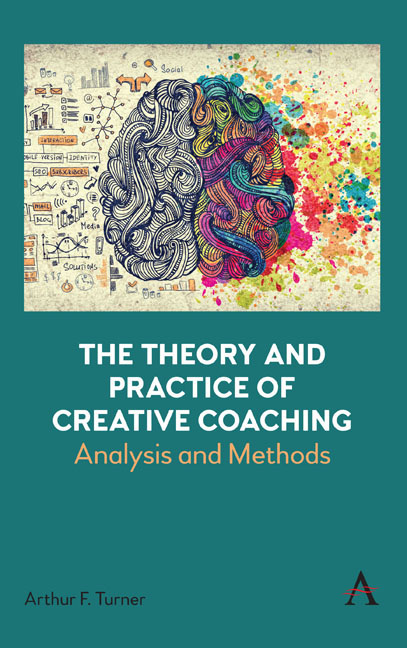Book contents
- Frontmatter
- Contents
- About the Author
- Preface
- Influences
- Introduction
- Section 1 Theory and Research
- Sections 2 and 3 Theory to Practice
- Section 2 Alternative Foci
- Section 3 Three Detailed Examples of Creativity in the Service of Executive Coaching (Walking, the Use of Finger Puppets and the Use of Music)
- Index
- Frontmatter
- Contents
- About the Author
- Preface
- Influences
- Introduction
- Section 1 Theory and Research
- Sections 2 and 3 Theory to Practice
- Section 2 Alternative Foci
- Section 3 Three Detailed Examples of Creativity in the Service of Executive Coaching (Walking, the Use of Finger Puppets and the Use of Music)
- Index
Summary
Certain approaches and models have tended to dominate the practice and teaching of executive coaching. These approaches and models, which have largely been developed in response to curricula and scholarly research, seem to assume that the practice of coaching, as a way of helping executives perform better, is a prominently linear set of events set in the pattern of questions and responses. More recently, however, it has been recognized that creativity, and the use of art, in coaching practice is increasing (see Jen Gash's 2017 book Coaching Creativity – Transforming Your Practice and Anna Sheather's 2019 book, Coaching beyond Words – Using Art to Deepen and Enrich Our Conversations).
While the ability to ask questions remains a core skill, along with listening and the use of silence, there are many other ways for coaches to elicit responses from their coachees. Qualified coaches have a variety of means at their disposal to explore the challenges and issues faced by their coachees. This is important to remember, since the purpose of executive coaching is to induce some meaningful action on the part of the coachee, not just to contain the perceived coaching process in an action-free bubble.
In this chapter, I explore some alternative ways in which coaches can engage with their coachees – ways that are different from conventional textbook methods. These creative approaches are partly based on my own leadership development research between 2008 and 2013, and the subsequent close examination of the ways in which adults learn through practical work ‘in the field’ with both leadership and coaching students in and outside of the university setting (see the ideas that were outlined by Steve Kempster, Arthur Turner and Gareth Edwards in A Field Guide to Leadership Development, 2017). In addition, I take a tentative glimpse at other leadership development techniques that help to shed light on the more creative and emergent interventions in coaching practice.
Here are a few guidelines for those who want to use greater creativity in their executive–coaching interactions:
● Introduce the concept of creative coaching to the contracting process so that the client is not over-surprised by your suggestions.
● Listen carefully to what your client says when you are building rapport at the start of your relationship. Pay attention to clues that reveal their ideas and interests.
- Type
- Chapter
- Information
- The Theory and Practice of Creative CoachingAnalysis and Methods, pp. 41 - 48Publisher: Anthem PressPrint publication year: 2023

